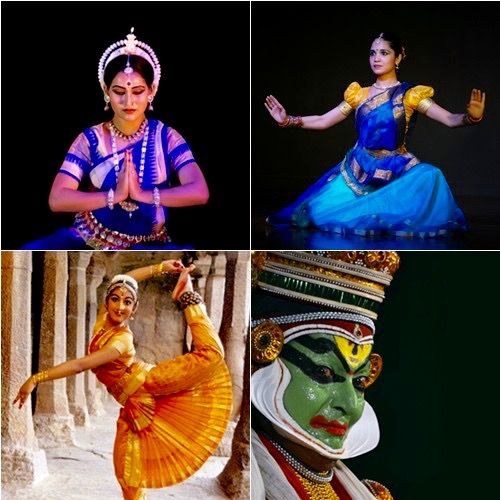The Dance of the Tribes: Celebrating the Richness of Tribal Dance Forms in India

India, with its vast and diverse landscape, is home to numerous tribal communities, each with its own unique culture, traditions, and art forms. Among the most expressive and deeply ingrained elements of tribal culture are their dances. Tribal dance forms are a powerful means of preserving and communicating their history, beliefs, rituals, and social practices. These dances are not merely performances, but a reflection of the community’s identity, spirituality, and connection with nature. From the mesmerizing beats of the drums to the graceful movements of the dancers, the tribal dances of India are as diverse and vibrant as the communities themselves.
Tribal Dances: A Reflection of Beliefs and Nature
For tribal communities, dance is not just an art form—it is a way to connect with their deities, honor their ancestors, celebrate harvests, and mark important life events. These dances are deeply spiritual and hold great significance in the daily life of tribal people. They often mimic the movements of animals, trees, or natural phenomena, reflecting the deep connection that tribal communities have with the earth and its cycles. The movements are synchronized with the rhythms of traditional music, which is typically played on instruments like the dhol, mandar, flute, and guitar.
Tribal dances also serve social functions, bringing together the community for celebrations, rituals, and festivals. The energy and vibrancy of these dances foster a sense of unity, helping tribal people maintain their close-knit social bonds and pass down their customs to future generations.
Prominent Tribal Dance Forms of India
Sattriya (Assam)
Originating from the Vaishnavite monasteries of Assam, Sattriya is one of the eight classical dance forms of India. Traditionally performed in the satras (monasteries) by male dancers, it combines devotional themes with intricate footwork, graceful hand movements, and facial expressions to narrate stories from Hindu mythology. While it retains its religious roots, Sattriya has evolved to become a respected dance form performed across the world.
Chhau (Jharkhand, Odisha, West Bengal)
Chhau is a vibrant and acrobatic tribal dance, performed during festivals and celebrations. With origins in the martial traditions of eastern India, the dance involves intricate movements and vigorous footwork, often depicting mythological stories or folk legends. The dancers wear elaborate masks, representing gods, demons, and heroes, which adds a dramatic and spiritual element to the performance.
Kalbelia (Rajasthan)
The Kalbelia dance form is performed by the nomadic Kalbelia tribe of Rajasthan, known for their close connection to the snake deity. The dance, characterized by fluid, serpentine movements, is performed by women to the beats of traditional dhol and flute. The dancers’ graceful movements mimic the movements of snakes, and the dance is considered a way to invoke blessings for fertility, health, and prosperity.
Ghoomar (Rajasthan)
Ghoomar is a traditional dance of the women of Rajasthan, especially the Bhil tribe. Performed in a circle, the dancers twirl gracefully while wearing colorful traditional attire. The lively beats of the dholak, along with the rhythmic clapping, make Ghoomar an exuberant and joyful dance, celebrating occasions like weddings, festivals, and religious rituals.
Gond (Madhya Pradesh)
The Gond tribal community of Madhya Pradesh has its own distinct dance traditions that revolve around themes of nature, agriculture, and community life. The dance is marked by spontaneous and free-flowing movements that resemble the natural world—mimicking the movements of animals, trees, and water. The Gond dances are performed during harvest seasons or important festivals and are a celebration of the bond between humans and nature.
Warli (Maharashtra)
The Warli tribe of Maharashtra is known for its simple yet profound dance forms. Warli dances are often performed during harvest festivals and are deeply symbolic, representing the tribe’s connection with nature and the cosmos. The movements of the dancers are synchronized with the beats of drums and claps, and the dance is often performed in a circle, representing the cycle of life.
Thembu (Nagaland)
The Thembu dance is one of the tribal dances from Nagaland, celebrated by the Naga people. It is performed during festivals and social gatherings, where dancers, adorned in traditional attire, move rhythmically to the beats of the drum. The dance represents the tribe's warrior spirit and is often accompanied by chanting, adding a ritualistic aspect to the performance.
Dandia Raas (Gujarat)
Though often associated with the Gujarati community, Dandiya Raas is also a part of the tribal traditions of Gujarat. It is performed during the festival of Navratri and involves dancers holding dandiyas (sticks) in each hand, striking them together in a rhythmic pattern. The fast-paced footwork, energetic music, and colorful attire make Dandiya Raas a lively and celebratory dance.
Bison Horn (Madhya Pradesh)
Performed by the Baiga tribe of Madhya Pradesh, the Bison Horn dance involves the wearing of bison horn-shaped headgear by male dancers, who engage in energetic and vibrant movements. The dance is performed as a prayer for a good harvest and to seek protection from evil spirits. The rhythmic clapping and drumming add to the intensity and excitement of the performance.
Karma (Chhattisgarh)
The Karma dance, performed by the tribal communities of Chhattisgarh, is a harvest dance performed during the Karma festival. This dance is associated with the worship of the Karma tree and the agricultural cycle. The dancers move in synchronized patterns, forming circles and symbolic formations, as they sing and celebrate the harvest and the blessings of nature.
The tribal dance forms of India are a testament to the country’s rich cultural diversity and the deep-rooted traditions that have been passed down through generations. These dances, rich in symbolism and spiritual significance, offer a glimpse into the lives, beliefs, and aspirations of tribal communities. They are a celebration of nature, life, and the connections that bind humans to the world around them. As these dance forms continue to be performed and preserved, they serve as a bridge between the past and the present, keeping the rich heritage of India's tribal communities alive for future generations.